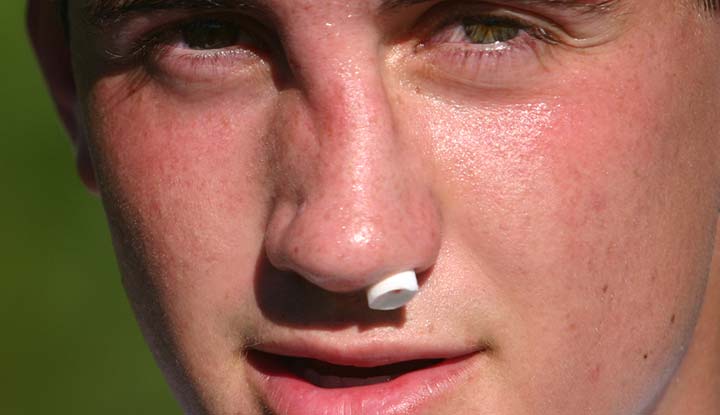A broken nose is a common facial injury. It happens when you break or crack the bones and cartilage in your nose. A broken nose is an injury that requires immediate medical attention. Without treatment, a broken nose can lead to complications. Treatment ranges from using ice for swelling to surgery to repair your nose.
Advertisement
Cleveland Clinic is a non-profit academic medical center. Advertising on our site helps support our mission. We do not endorse non-Cleveland Clinic products or services. Policy

A broken nose (nasal fracture) is when you break or crack bones or damage cartilage in your nose. It’s a common facial fracture. You should get medical care right away if you think you have a broken nose. Prompt treatment may help you avoid permanent damage to your nose.
Advertisement
Cleveland Clinic is a non-profit academic medical center. Advertising on our site helps support our mission. We do not endorse non-Cleveland Clinic products or services. Policy
Broken nose symptoms may include:
A broken nose is a type of blunt force trauma. This is an injury that happens if you’re hit hard by something or someone, or injured in a fall. You may break your nose if you’re:
A broken nose may cause a septal hematoma. A septal hematoma is blood pooling in your septum. Your septum is the cartilage and bone that separates your nostrils. A septal hematoma can lead to serious issues like:
A healthcare provider will do a physical examination. They’ll gently press around the bridge of your nose. They’ll examine the inside of your nose for signs of an obstruction. A provider may do imaging tests like X-rays or CT scans if they think you may have other facial injuries.
Advertisement
Treatments range from putting ice on your broken nose to having surgery to repair it. The treatment that’s right for you depends on the severity of your injuries.
Taking over-the-counter pain relievers (like acetaminophen or ibuprofen) can help with pain. Applying ice packs can help ease swelling and other broken nose symptoms.
A healthcare provider may decide to drain your septum within 24 hours after your injury. Draining it reduces the risk of serious complications.
An injury can knock your nasal bones and cartilage out of place (alignment). Your healthcare provider will gently push your bones and cartilage back into place. They may wait a few days to do a manual alignment procedure. The procedure involves the following steps:
You’ll be able to remove the packing and dressing in about two weeks.
You may need surgery if you have a severely broken nose, or you can’t breathe through your nose. Surgeries to fix your broken nose include:
That depends on your situation. In general, a broken nose heals within six to eight weeks. Your healthcare provider or surgeon will explain how long it’ll take you to recover.
You may not need anything other than ice and painkillers to treat a broken nose. But you could need treatment or surgery if you have a severe fracture, or your nose is broken in more than one place. That said, you should seek medical care if you think you have a broken nose. Getting treatment right away can reduce your risk of complications.
If you have a broken nose, you may want to ask your healthcare provider questions like:
Advertisement
You should contact your provider if:
You should go to the emergency room if:
No, but you can reduce your risk of breaking your nose by:
Swelling from a broken nose can interrupt a good night’s sleep. You can reduce swelling and get more rest by propping your head and shoulders on a stack of pillows. Taking a decongestant may help.
You may think a broken nose is no big deal. It’s true that a broken nose usually isn’t a medical emergency. But you should visit a healthcare provider right away if you think you may have a broken nose. A provider can check your nose and recommend treatment. Getting treatment early on reduces the risk of complications.
Advertisement
Facial injuries can change your life. At Cleveland Clinic, our providers are there to support you through every step of facial trauma reconstruction.

Last reviewed on 03/27/2025.
Learn more about the Health Library and our editorial process.